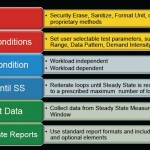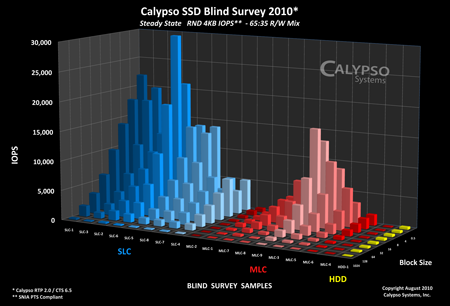Today, SSSI released the Client PTS. Client refers to a single user / few tasks environment, as opposed to Enterprise, which implies multiple users / many tasks. What are the differences between the Client and Enterprise PTS?
The Enterprise PTS calls out a Write Saturation test, where the SSD is written to continuously over the entire drive capacity 4 times or for 24 hours, whichever comes first. This test provides a good idea of the robustness of the drive in an enterprise environment. This test is not applicable to Client environments, and was not included in the Client PTS.
The other three main types of tests measure IOPS, throughput (MB/sec), and Latency (how quickly a drive responds to commands) and are included in both Enterprise and Client PTS. Here the Client PTS differs in that that tests may be performed on smaller segments of the drive, not all of the portions of the drive being tested need to be preconditioned, and different types of test stimulus are applied. These changes were based on the testing of literally dozens of different SSDs, as well as data provided by manufacturers of client SSDs.
The Client and Enterprise PTS documents can be downloaded at www.snia.org/pts.

